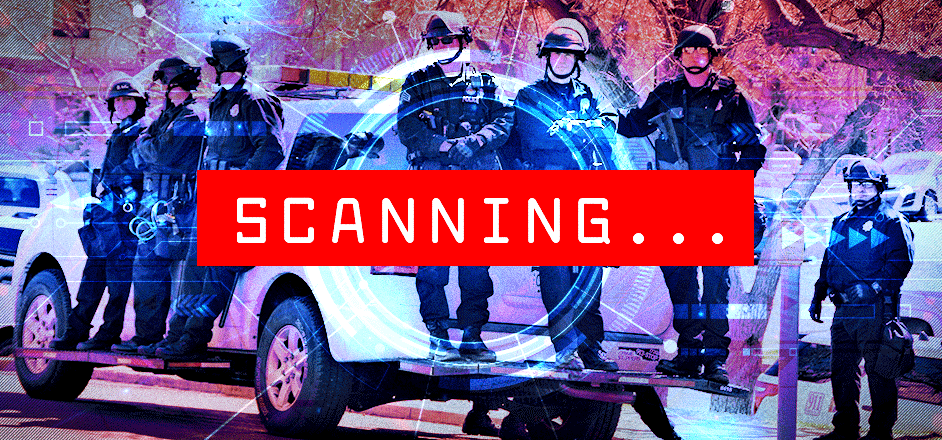A technician sits in a small room, surrounded by computer monitors — watching. People come and people go: people with their loved ones, people hanging with their friends, people alone, people everywhere flash across the screens, unaware and oblivious to the fact that they are under police surveillance.
If a crime is reported, it will be caught on camera and the authorities’ will be able to pinpoint the crime, and locate the suspect. The criminal will be tracked in real time, watched, followed visually, virtually across the city; officers on the ground will be led by eyes in the sky, directly to the perp, to cut them off and apprehend them on the spot.
That’s how Denver Police’s new Real Time Crime Information Center (RTCIC) works. It’s a system that incorporates hundreds of cameras already installed across the city, and allows the police to stop crime much faster.
But it’s been very controversial recently. Headlines like 9News’ “Denver Police quietly expand surveillance camera network” have caused a stir in the community. People don’t like it when authorities expand such a network, without consulting the public, without outreach, disclosure and transparency.
The thing is, though, as Denver Police Chief Paul Pazan explained to me, the RTCIC is not exactly "new" — and it certainly wasn’t created in secret.
“There's nothing new here other than we're leveraging the technology. We're putting this together,” he says. “And I can tell you that that there was considerable outreach.”
In a nutshell, Pazan explained that the RTCIC meshes three previously existing programs into one: It combines computer aided 9-1-1 dispatchers, with DPD’s existing HALO cameras and their ShotSpotter technology.
The HALO cameras have been around since the Democratic National Convention in 2008; it’s a network of several hundred cameras placed in “High Activity Locations” throughout the city, all of which are mapped on the DPD’s website. Those cameras are all visible, they’re all publicly facing and all publicly owned.
Shotspotter is another surveillance technology that's been around, which detects gunshots, and triangulates their origin. If a shot is fired in the city of Denver (even if it’s not reported) the police will be notified and they’ll be able to respond right to the source.
Those two programs, in concert with the 9-1-1 dispatchers taking calls, have a network-effect, and make crime-stopping much more effective, Pazan says.
“This is this is by no means an expansion. This is leveraging and synthesizing what already exists — it's consolidating and synthesizing information, so that way we can keep our community safe.”
Pazan said that phrase a lot throughout our conversation: RTCIC is about consolidating and synthesizing information. It’s end goal is to make police more efficient and effective at protecting the community.
Which, so far it has, he says. They’ve had a lot of success using this new, futuristic combination of technologies to catch the Bad Guys. With RTCIC, DPD can watch, listen and respond to criminal acts, faster than they’ve ever been able to before.
“It's consolidating, it's leveraging, it's utilizing newer technology in order to synthesize this information and make us more effective,” Pazan says.
In recent weeks, though, the DPD has received a lot of community backlash about all this. In the wake of 9News’ article, claiming that they had created RTCIC “quietly,” people started flooding them with calls, complaints and questions. Even city council members approached police about the issue. Which has Pazan clearly flustered.
“I'm a little surprised by some of the pushback,” he says, sounding genuinely perplexed. All three of these programs, existed prior to them being combined into the RTCIC. The HALO cameras have been in place since 2008; ShotSpotter has been used in Denver since about 2015; and 9-1-1 dispatchers… well, they’ve been around forever. All DPD did was “synthesize and consolidate” the programs to “increase efficiency.”
And on top of all that, prior to meshing those existing programs into the RTCIC, Denver Police were very public with the initiative, Pazan says. Last year, DPD did outreach about this project specifically in northeast Denver on April 15th; outreach in downtown Denver on April 18th; in southwest Denver on May 8th; in the far northeast on May 16th; near northeast on May 29th; and southeast Denver on June 11th.
All of that, prior to creating RTCIC.
“This isn't something that we did in secret,” Pazan says. “There was public facing conversation about what a Real Time Crime Information Center is … This was presented to individual council members starting January 10th, all the way through March 27th of 2019, and in meetings with community members.”
So when 9News’ Jeremy Jojola reported that this was something done discreetly — or “quietly” as his headline stated — it was disingenuous. And Pazan seemed genuinely confused by it.
“We're not hiding a single thing,” he said.
And, he continues, this is also something that has proven to be effective in other cities. Pazan says that 70% of the major cities throughout the US use an RTCIC in some capacity to aid in crime-stopping. It’s a tool that makes cities and the people in them safer, according to him.
“[Those other cities] saw the value in doing the exact same thing, connecting disparate systems, synthesizing information, so that we can be more effective at keeping our community safe,” Pazan says.
As long as that’s all this system is being used for, the existence of RTCIC shouldn’t upset anyone — and it certainly shouldn’t surprise anyone either.
But that’s an important qualifier: as long as that’s all it’s used for. There's a reason that the community gave Pazan and the DPD a hard time, upon discovering this — that kind of surveillance power makes people nervous. Not because they're afraid of being watched, usually, but because they're afriad of what else it might be used for.





Leave a Reply
You must be logged in to post a comment.